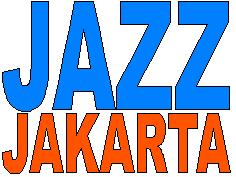KOINONIA
Koinonia was founded in 1980 by Abraham Laboriel and Bill Maxwell. The band had it's first public appearance at The Baked Potato, Los Angeles in 1980. The name Koinonia is from Greek, that means "partnership" or "fellowship" or "to communicate by the act of using as common."
The "original" band consisted of Abraham Laboriel, Bill Maxwell, Harlan Rogers, Hadley Hockensmith, Dean Parks, John Phillips and Alex Auña. Justo Alamrio replaced John Phillips in 1981, and Dean Parks left because he did not want to travel. Lou Pardini joined the band in 1988.
The band have released three studio albums and one live album. On their latest album the group appeared in a new concept with vocal songs, and not as an instrumental group as they started. There are also realesed two compilations of Koinonia "Compact Favorites" (1989), and "Pilgrims Progression" in 1991. In 2010 there was released a box-set, containing all their albums on cd, and two dvd videos.
On their latest album "Koinonia", Dean Parks and Michael Landau played Guitar, and Michael Ficher replaced Alex Acuña on percussion. Also Chester Thompson (drums) and Buddy Nuanez (guitar) played with Koinonia on tours, but was not members.
Koinonia was disbanded in 1991.
Alex Acuña has been a member of Weather Report.
The members of Koinonia have after the disband, been playing together as backing musicans for other artists, such as Andrae Crouch, in concert(s) where they sometimes have played the songs of Koinonia. And also Fletch Wiley.
Koinonia's albums include:
- 1982: More than a Feelin'
- 1984: Celebration (Live)
- 1986: Frontline
- 1989: Koinonia
- 1989: Compact Favorites (collection)
- 1992: Pilgrim’s Progression – Best of Koinonia (compilation)
- 2005: Celebrate in Gothenburg (DVD of live concert in 1983)
- 2010: All The Best (compilation of 4 CDs and 2 DVDs)
 |
| More Than A Feelin', released in 1984 on Cenyon Records. (Japanease Release Only) |
 |
| Frontline, released in 1986 on Sparrow Records. Koinonia's second studio album |
 |
| Self titled album released in 1989 on Royal Music. Kononia's first & only vocal album. |
 |
| Compact Favorites, released in 1989 on Sparrow Records, is a compilation with songs from their three first albums |
 |
| Pilgrim's Progression, released in 1991 on Magnus Erikson Production. Great compilation presenting the music of Koinonia. |
 |
| All The Best, released 2010 is a box-set, compilation including 4 cd's and 2 dvd-video's. That is all their albums and two live video concerts: Live In Scandinavium and Live In Montreux |
 |
| All The Best, 2010 on MEP, back cover |
Albums by the members of Koinonia:
Abraham Laboriel
1993 - Dear Friends
1994 - Guidum
1995 - Justo Almario & Abraham Laboriel
2004 - Live In Switzerland
1993 - Notenstock with special guest Abraham Laboriel - Live In Vienna 1993
1995 - Carol Knauberm, featuring: Alex Acuña, Tom Brechtlein, Rich Fames, Brandon Fields
Jimmy Johnson, Abraham Laboriel - The Juggler
2001 - Greg Matieson, Abraham Laboriel, Michael Landau, Vinnie Colaiuta - Live at
the Baked Potato 2000
2001 - Abraham Laboriel, Greg Mathieson - Laboriel Mathieson
2005 - Greg Mathieson, Abraham Laboriel Sr., Michael Landau, Abraham Laboriel Jr. / The
Jazz Ministry - Another Night At The Baked Potato 2005
Justo Almario
1981 - Interlude
1985 - Forever Friends
1987 - Plumbline
1989 - Family Time
1990 - Marcos Ariel With Justo Almario - Rhapsody In Rio
1990 - Heritage
1995 - Count Me In
1998 - Justo Almario / Marcos Ariel - Soul Song
1999 - Tolú / Alex Acuña & Justo Almario - Rumbero's Poetry
2002 - Tolú / Alex Acuña & Justo Almario - Bongó De Van Gogh
2008 - Lothar Kosse, Ralf Gustke, Adam Rogers, Phil Keaggy, Justo Almario, Michael
Schlierf, Andreas Gundlach, Vinnie Colaiuta, NBA, Kosho - Play Like David
Hadley Hockensmith
1986 - Hearthsongs
Alex Acuña
1990 - Alex Acuña & Unknowns - Thinking Og You
2000 - Acuarela De Tambores - Top Percussion (Rhythms For A New Millennium)
2000 - Matucana featuring: Charlie Mariano & Alex Acuña - Isla Negra
2002 - Los Hijos del Sol / Alex Acuña & Eva Ayllón - To My Country (Contemporary Peruvian Music)
2006 - Joe Zawinul, WDR BB, Alex Acuña, Nathaniel Townsley, Victor Bailey - Brown Street
2009 - Acuña / Hoff / Mathisen - Jungle City
2011 - Clare Fischer Latin Jazz Big Band 'Directed by Featuring', Poncho Sanchez, Alex Acuña, Luis Conte, Peter Erskin, Steve Khan, Alan Pasqua, Don Shelton, Carl Saunders, Andy Martin - ¡Ritmo!
2012 - Acuña / Hoff / Mathisen - Barxeta
Harlan Rogers And Smitty Price
1986 - Timeless (Hymns In Colour)
1987 - Praise (An Instrumental Medley Of 22 Praise Classics)
1988 - The Colours Of Praise Two (An Instrumental Medley Of 20 Praise Classics)
1989 - Hymns In Colour
Lou Pardini




